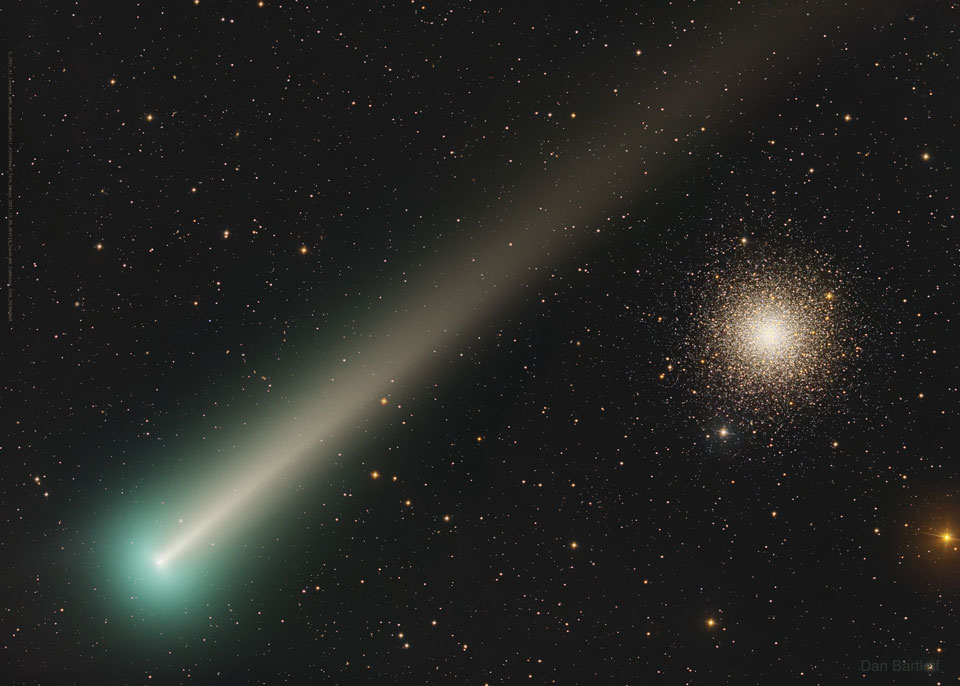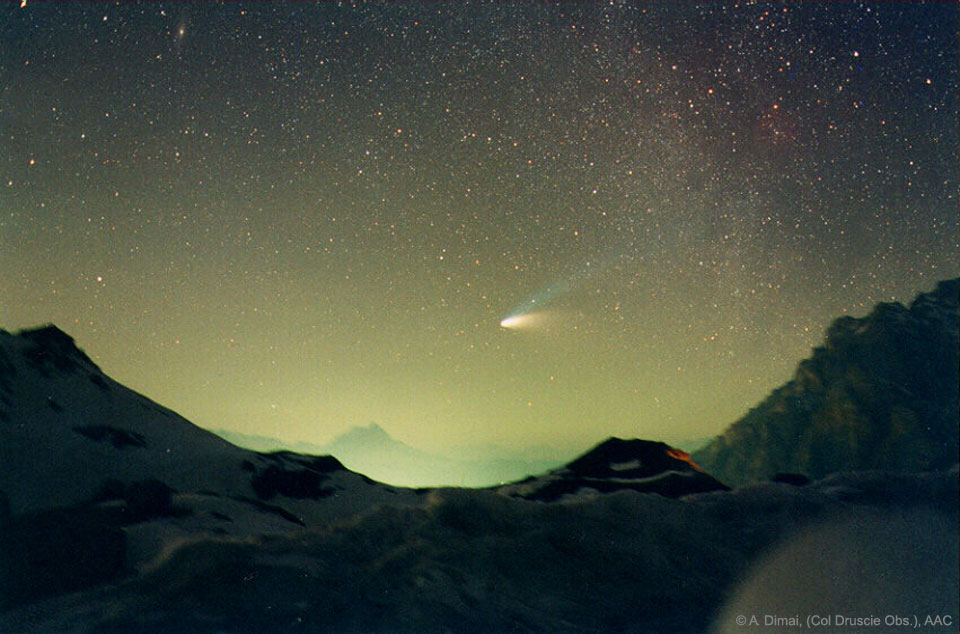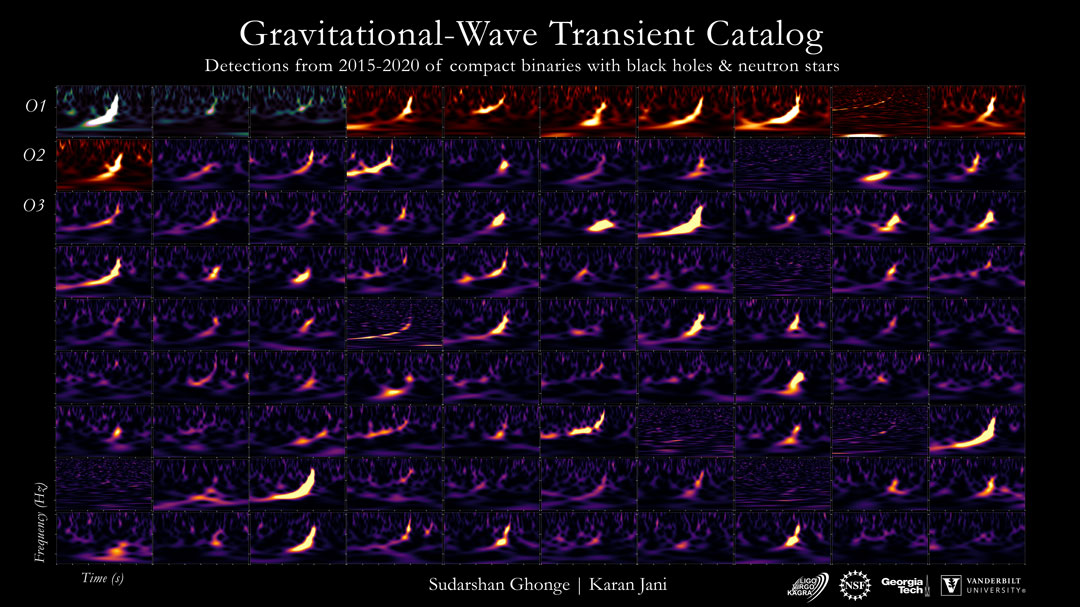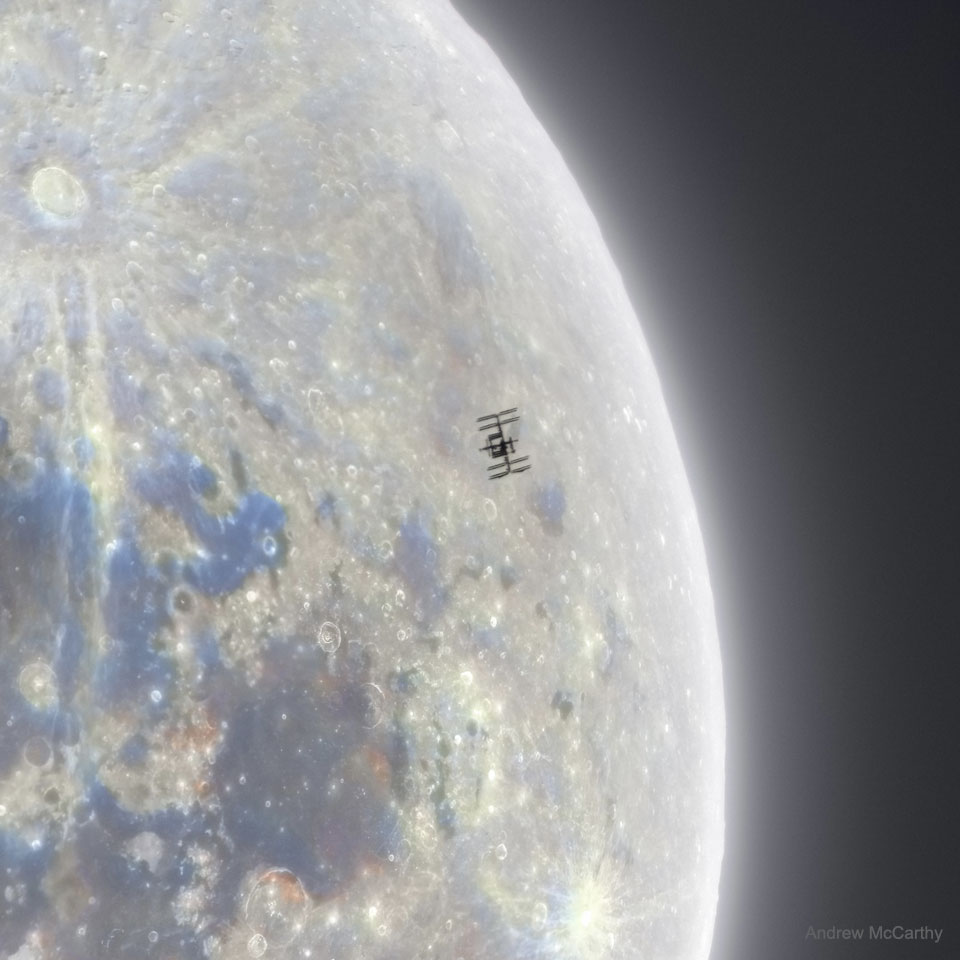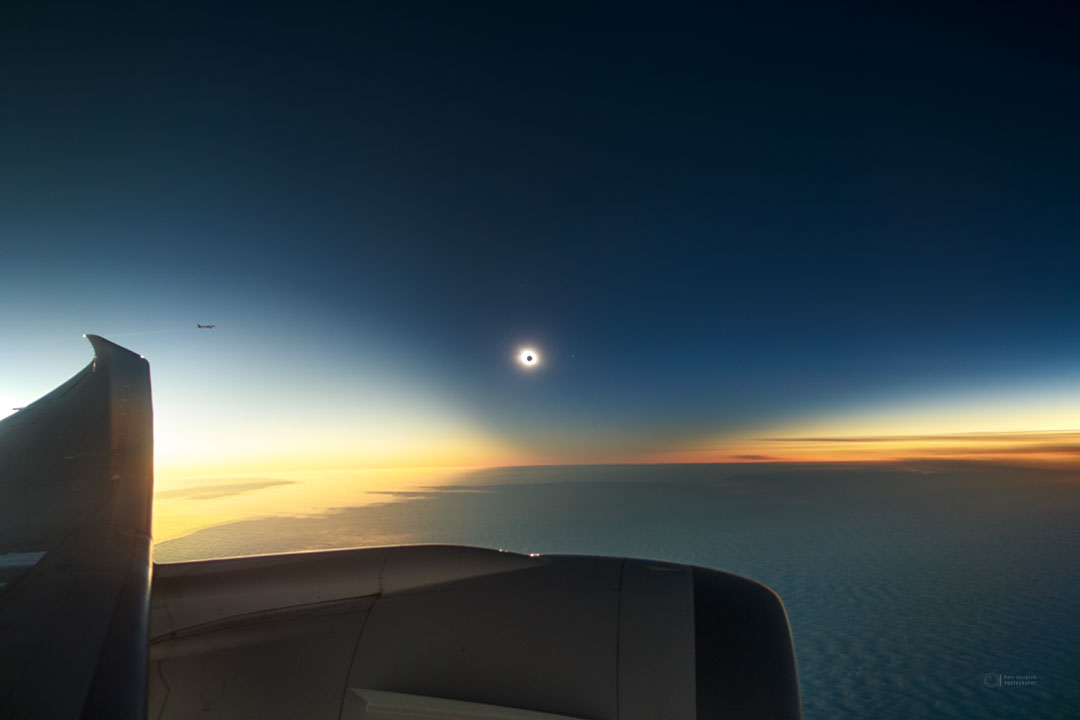Nombre total de pages vues
12/12/2021
AERONAUTIQUE - Avions de légende - Le Spitfire
ASTRONOMY - Comet Leonard Before Star Cluster M3
2021 December 12
Image Credit & Copyright: Dan Bartlett
Explanation: Comet Leonard is now visible to the unaided eye -- but just barely. Passing nearest to the Earth today, the comet is best seen this week soon after sunset, toward the west, low on the horizon. Currently best visible in the north, by late December the comet will best be seen from south of Earth's equator. The featured image of Comet C/2021 A1 (Leonard) was taken a week ago from California, USA. The deep exposure shows in great detail the comet's green gas coma and developing dust tail. The comet -- across our inner Solar System and only light-minutes away -- was captured passing nearly in front of globular star cluster M3. In contrast, M3 is about 35,000 light-years away. In a week, Comet Leonard will pass unusually close to Venus, but will continue on and be at its closest to the Sun in early January.
10/12/2021
ASTRONOMY - Eclipse on a Polar Day
Image Credit & Copyright: Stephanie Ziyi Ye
Explanation: During polar day, in Arctic and Antarctic summer, the Sun stays above the horizon for periods of 24 hours or more. Recorded on December 4, this fisheye timelapse image tracks the Sun in multiple frames as it completes a circle in the summer sky above Union Glacier, Antarctica. Of course on that date, Union Glacier's sky did grow dark even though the Sun was above the horizon. Captured during the brief period of totality, an eclipsed Sun is at bottom center of the composite view. Near the edge of the total eclipse path across planet Earth, the Moon's shadow darkens the sky above.
09/12/2021
ASTRONOMY - A Total Eclipse of the Sun
2021 December 9
Image Credit & Copyright: Theo Boris, Christian A. Lockwood, David Zimmerman (JM Pasachoff Antarctic Expedition)
Compositing: Zev Hoover and Ronald Dantowitz (MARS Scientific)
Explanation: Few were able to stand in the Moon's shadow and watch the December 4 total eclipse of the Sun. Determined by celestial mechanics and not geographical boundaries, the narrow path of totality tracked across planet Earth's relatively inaccessible southernmost continent. Still, some enthusiastic and well-insulated eclipse chasers were rewarded with the dazzling spectacle in Antarctica's cold but clear skies. Taken just before the brief totality began, this image from a ground-based telescope inside the edge of the shadow path at Union Glacier catches a glimmer of sunlight near the top of the silhouetted lunar disk. Look closely for the pinkish solar prominences arcing above the Sun's limb. During totality, the magnificent solar corona, the Sun's outer atmosphere, made its much anticipated appearance, seen in the composite view streaming far from the Sun's edge.
AERONAUTIQUE - Avions de légende - Messerschmitt Me 262
08/12/2021
ASTRONOMY - Comet Hale-Bopp Over Val Parola Pass
Image Credit & Copyright: A. Dimai, (Col Druscie Obs.), AAC
Explanation: Comet Hale-Bopp, the Great Comet of 1997, became much brighter than any surrounding stars. It was seen even over bright city lights. Away from city lights, however, it put on quite a spectacular show. Here Comet Hale-Bopp was photographed above Val Parola Pass in the Dolomite mountains surrounding Cortina d'Ampezzo, Italy. Comet Hale-Bopp's blue ion tail, consisting of ions from the comet's nucleus, is pushed out by the solar wind. The white dust tail is composed of larger particles of dust from the nucleus driven by the pressure of sunlight, that orbit behind the comet. Comet Hale-Bopp (C/1995 O1) remained visible to the unaided eye for 18 months -- longer than any other comet in recorded history. The large comet is next expected to return around the year 4385. This month, Comet Leonard is brightening and may soon become visible to the unaided eye.
07/12/2021
ASTRONOMY - Ninety Gravitational Wave Spectrograms and Counting
Image Credit: NSF, LIGO, VIRGO, KAGRA, Georgia Tech, Vanderbilt U.; Graphic : Sudarshan Ghonge & Karan Jani
Explanation: Every time two massive black holes collide, a loud chirping sound is broadcast out into the universe in gravitational waves. Humanity has only had the technology to hear these unusual chirps for the past seven years, but since then we have heard about 90 -- during the first three observing runs. Featured above are the spectrograms -- plots of gravitational-wave frequency versus time -- of these 90 as detected by the giant detectors of LIGO (in the USA), VIRGO (in Europe), and KAGRA (in Japan). The more energy received on Earth from a collision, the brighter it appears on the graphic. Among many science firsts, these gravitational-radiation chirps are giving humanity an unprecedented inventory of black holes and neutron stars, and a new way to measure the expansion rate of our universe. A fourth gravitational wave observing run with increased sensitivity is currently planned to begin in 2022 December.
AERONAUTIQUE - Avions de légende - Le Corsair
06/12/2021
ASTRONOMY - Space Station Silhouette on the Moon
2021 December 6
Image Credit & Copyright: Andrew McCarthy
Explanation: What's that unusual spot on the Moon? It's the International Space Station. Using precise timing, the Earth-orbiting space platform was photographed in front of a partially lit gibbous Moon last month. The featured composite, taken from Payson, Arizona, USA last month, was intricately composed by combining, in part, many 1/2000-second images from a video of the ISS crossing the Moon. A close inspection of this unusually crisp ISS silhouette will reveal the outlines of numerous solar panels and trusses. The bright crater Tycho is visible on the upper left, as well as comparatively rough, light colored terrain known as highlands, and relatively smooth, dark colored areas known as maria. On-line tools can tell you when the International Space Station will be visible from your area.
05/12/2021
ASTRONOMY - Total Solar Eclipse Below the Bottom of the World
2021 December 5
Image Credit & Copyright: Petr Horálek (ESO Photo Ambassador, Inst. of Physics in Opava)
Explanation: Yesterday there was a total solar eclipse visible only at the end of the Earth. To capture the unusual phenomenon, airplanes took flight below the clouded seascape of Southern Ocean. The featured image shows one relatively spectacular capture where the bright spot is the outer corona of the Sun and the eclipsing Moon is seen as the dark spot in the center. A wing and engine of the airplane are visible across the left and bottom of the image, while another airplane observing the eclipse is visible on the far left. The dark area of the sky surrounding the eclipsed Sun is called a shadow cone. It is dark because you are looking down a long corridor of air shadowed by the Moon. A careful inspection of the eclipsed Sun will reveal the planet Mercury just to the right. The next total solar eclipse shadow will cross parts of Australia and Indonesia in April of 2023, while the one after that will cross North America in April of 2024.
ASTRONOMY - Moonlight, Planets, and Perseids
2025 August 15 Moonlight, Planets, and Perseids Image Credit & Copyright : Jeff Dai ( TWAN ) Explanation: In the predawn sky on A...

-
2022 September 26 All the Water on Planet Earth Illustration Credit: Jack Cook, Adam Nieman, Woods Hole Oceanographic Institution ; Data ...
-
2025 January 14 North Star: Polaris and Surrounding Dust Image Credit & Copyright: Davide Coverta Explanation: Why is Polaris called ...

